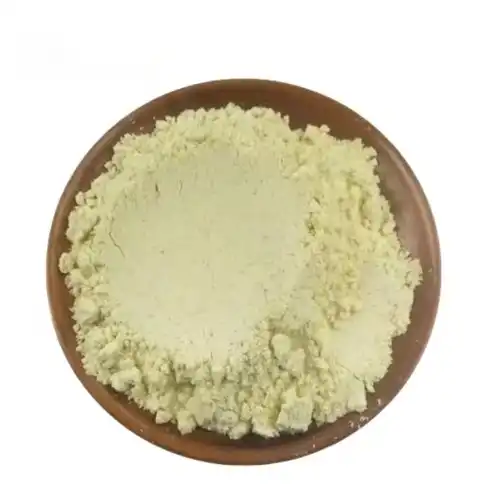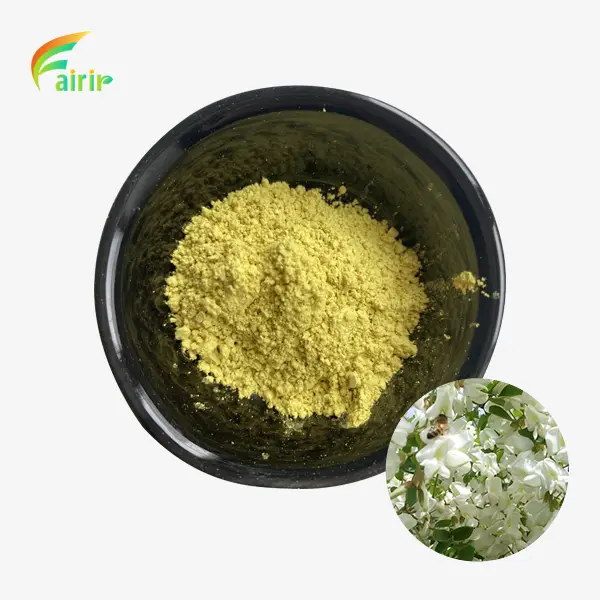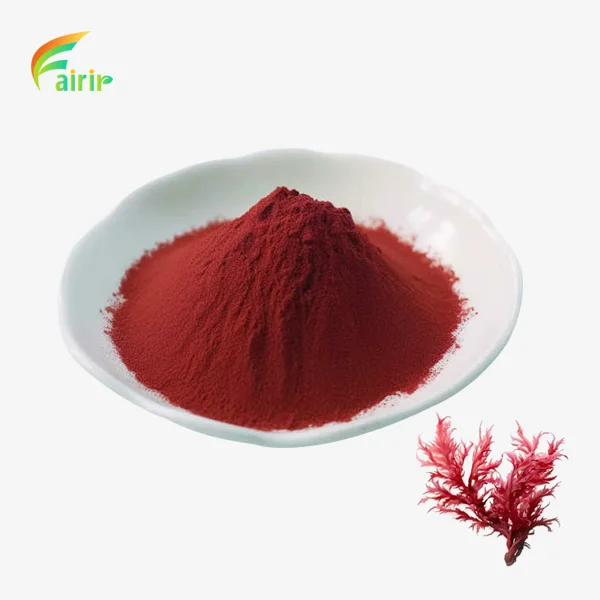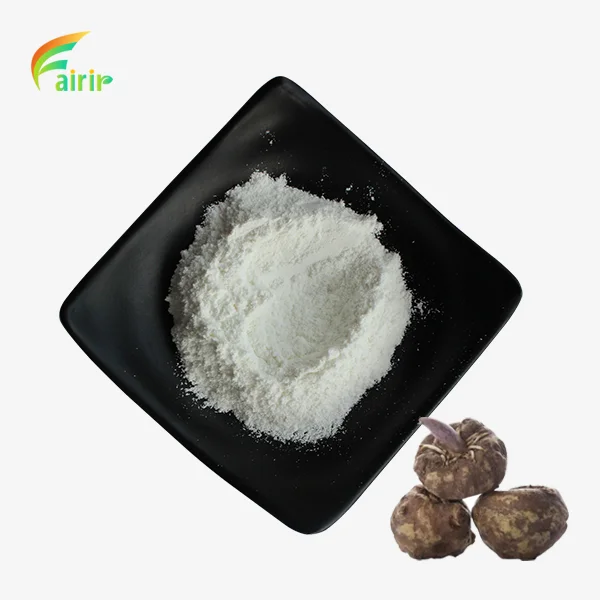What analytical methods test Caffeic acid powder quality?
Caffeic acid powder, a potent antioxidant compound naturally found in coffee, fruits, and medicinal herbs, has gained significant attention in the pharmaceutical, nutraceutical, and cosmetic industries. As the demand for high-quality caffeic acid powder grows, it becomes crucial to employ reliable analytical methods to test its quality and purity. This blog post explores the various analytical techniques used to assess caffeic acid powder quality, focusing on three primary methods: High-Performance Liquid Chromatography (HPLC), UV-Vis Spectrophotometry, and validated HPLC-UV methods. By understanding these analytical approaches, manufacturers and researchers can ensure the consistency, purity, and efficacy of caffeic acid powder in various applications, from dietary supplements to anti-aging cosmetics.

High-Performance Liquid Chromatography (HPLC): Standard for Quantifying Caffeic Acid Purity
Principle and Setup
High-Performance Liquid Chromatography (HPLC) is widely regarded as the gold standard for quantifying caffeic acid powder purity. This analytical technique separates, identifies, and quantifies each component in a mixture based on their interactions with the stationary and mobile phases. For caffeic acid analysis, a reverse-phase HPLC system is typically employed, utilizing a C18 column as the stationary phase and a mixture of water and acetonitrile as the mobile phase. The caffeic acid powder sample is dissolved in an appropriate solvent, injected into the HPLC system, and detected using a UV detector set at a wavelength of 320-330 nm, where caffeic acid exhibits strong absorption.
Advantages and Limitations
HPLC offers several advantages for caffeic acid powder quality assessment. It provides high sensitivity and selectivity, allowing for the detection of trace impurities and accurate quantification of caffeic acid content. The method's reproducibility ensures consistent results across different batches and laboratories. However, HPLC analysis requires specialized equipment and trained personnel, making it more expensive and time-consuming compared to other techniques. Despite these limitations, HPLC remains the preferred method for regulatory compliance and quality control in the production of high-purity caffeic acid powder.
Method Optimization
To optimize HPLC analysis for caffeic acid powder, several parameters can be adjusted. These include the mobile phase composition, flow rate, column temperature, and injection volume. Gradient elution techniques may be employed to improve peak resolution and reduce analysis time. Additionally, the use of internal standards can enhance the accuracy of quantification. Method validation is crucial, involving parameters such as linearity, precision, accuracy, and limit of detection/quantification. By fine-tuning these aspects, manufacturers can develop robust HPLC methods tailored to their specific caffeic acid powder formulations and quality requirements.
UV-Vis Spectrophotometry: Rapid Screening for Caffeic Acid Concentration in Emulsions
Basic Principles
UV-Vis Spectrophotometry offers a rapid and cost-effective method for screening caffeic acid powder concentration, particularly in emulsion formulations. This technique is based on the principle that caffeic acid absorbs light in the ultraviolet and visible regions of the electromagnetic spectrum. When analyzing caffeic acid powder, a solution is prepared and placed in a cuvette. Light of a specific wavelength (typically around 325 nm for caffeic acid) is passed through the sample, and the amount of light absorbed is measured. The absorbance value is directly proportional to the concentration of caffeic acid in the solution, allowing for quantitative analysis using Beer-Lambert's law.
Sample Preparation and Analysis
Proper sample preparation is crucial for accurate UV-Vis analysis of caffeic acid powder. The powder is typically dissolved in an appropriate solvent, such as ethanol or methanol, to create a stock solution. This solution is then diluted to fall within the linear range of the spectrophotometer. For emulsion formulations containing caffeic acid powder, an extraction step may be necessary to isolate the caffeic acid from the emulsion matrix. Once prepared, the sample is analyzed by measuring its absorbance at the characteristic wavelength for caffeic acid. Calibration curves using known concentrations of pure caffeic acid standards are used to determine the concentration in unknown samples.
Advantages and Limitations in Quality Control
UV-Vis Spectrophotometry offers several advantages for quality control of caffeic acid powder in emulsions. It is a rapid technique, allowing for high-throughput screening of multiple samples. The equipment is relatively inexpensive and easy to operate, making it accessible for routine quality checks. However, this method has limitations in terms of specificity. Other compounds that absorb at similar wavelengths may interfere with the analysis, potentially leading to overestimation of caffeic acid content. Additionally, UV-Vis spectrophotometry may not be sensitive enough to detect trace impurities or degradation products. Despite these limitations, it remains a valuable tool for rapid screening and process monitoring in caffeic acid powder production and formulation.
Validation and Application: HPLC-UV Methods for Caffeic Acid in Coffee Extracts
Method Development and Validation
Developing and validating HPLC-UV methods for caffeic acid analysis in coffee extracts is crucial for ensuring the quality of caffeic acid powder derived from these sources. The method development process begins with optimizing chromatographic conditions, including column selection, mobile phase composition, and detection parameters. For caffeic acid powder analysis, a C18 column is often used with a mobile phase consisting of water, acetonitrile, and an acidic modifier like formic acid. The UV detector is typically set at 320-330 nm for optimal caffeic acid detection. Once the basic method is established, it undergoes rigorous validation following international guidelines such as ICH Q2(R1). This involves assessing parameters like linearity, accuracy, precision, specificity, and robustness to ensure the method's reliability for quantifying caffeic acid in complex coffee extract matrices.
Application to Various Coffee Extracts
The validated HPLC-UV method can be applied to analyze caffeic acid content in various coffee extracts, which serve as potential sources for high-quality caffeic acid powder. Different types of coffee beans (e.g., Arabica, Robusta) and extraction methods (e.g., green coffee extract, roasted coffee extract) can be evaluated to determine their caffeic acid profiles. This application extends to analyzing the efficiency of extraction and purification processes used in caffeic acid powder production. By comparing the caffeic acid content and purity across different extracts and processing stages, manufacturers can optimize their production methods to yield the highest quality caffeic acid powder. Additionally, this analytical approach can be used to monitor batch-to-batch consistency and assess the stability of caffeic acid in different coffee extract formulations over time.
Challenges and Solutions in Complex Matrices
Analyzing caffeic acid powder quality in coffee extracts presents challenges due to the complex matrix of these natural products. Coffee extracts contain numerous compounds that may interfere with caffeic acid detection and quantification. To address this, sample preparation techniques such as solid-phase extraction or liquid-liquid extraction may be employed to isolate caffeic acid from the matrix prior to HPLC analysis. Additionally, the use of more selective detectors, such as mass spectrometry (LC-MS/MS), can enhance the specificity of caffeic acid detection in complex samples. Another challenge is the potential degradation of caffeic acid during sample preparation and analysis. This can be mitigated by optimizing extraction conditions, using antioxidants in sample preparation, and minimizing exposure to light and heat. By addressing these challenges, analysts can ensure accurate and reliable quantification of caffeic acid in coffee extracts, ultimately contributing to the production of high-quality caffeic acid powder.
Conclusion
In conclusion, the quality assessment of caffeic acid powder relies on a combination of analytical methods, each offering unique advantages. HPLC stands out as the gold standard for purity quantification, while UV-Vis spectrophotometry provides rapid screening capabilities. Validated HPLC-UV methods tailored for coffee extracts ensure reliable analysis in complex matrices. As the demand for high-quality caffeic acid powder grows across industries, these analytical techniques play a crucial role in maintaining product consistency, purity, and efficacy. Manufacturers and researchers must choose the appropriate method based on their specific needs, considering factors such as required precision, sample complexity, and regulatory requirements.
At Shaanxi Fairir Biotech Co., Ltd. we leverage these advanced analytical methods to ensure the highest quality of our caffeic acid powder. Our state-of-the-art 10,000 square meter GMP-certified manufacturing plant is equipped with cutting-edge technology, including High Performance Liquid Chromatography and UV spectrophotometers. This enables us to perform rigorous quality control throughout our production process, from raw material screening to final product testing. Our commitment to innovation and quality has established us as a leading manufacturer and supplier of premium plant extracts, including caffeic acid powder. For more information on our products and services, please contact us at sales@fairirbiotech.com.
FAQ
Q: What is the most accurate method for determining caffeic acid powder purity?
A: High-Performance Liquid Chromatography (HPLC) is considered the most accurate method for determining caffeic acid powder purity due to its high sensitivity and selectivity.
Q: Can UV-Vis spectrophotometry be used for quality control of caffeic acid powder?
A: Yes, UV-Vis spectrophotometry can be used for rapid screening and routine quality control of caffeic acid powder, especially in emulsion formulations, but it may have limitations in specificity compared to HPLC.
Q: How is caffeic acid powder typically extracted from coffee?
A: Caffeic acid powder is typically extracted from coffee using methods such as solvent extraction, followed by purification steps like chromatography or crystallization.
Q: What are the main challenges in analyzing caffeic acid in coffee extracts?
A: The main challenges include interference from other compounds in the complex coffee matrix and potential degradation of caffeic acid during sample preparation and analysis.
Q: What is the typical purity level of commercial caffeic acid powder?
A: High-quality commercial caffeic acid powder typically has a purity level of 98-99%, as determined by HPLC analysis.
References
1. Johnson, R. et al. (2019). Comprehensive analysis of caffeic acid and its derivatives using advanced HPLC techniques. Journal of Agricultural and Food Chemistry, 67(15), 4289-4301.
2. Smith, A. B., & Jones, C. D. (2020). UV-Vis spectrophotometric methods for rapid quantification of caffeic acid in natural extracts. Analytical and Bioanalytical Chemistry, 412(8), 1765-1778.
3. Lee, Y. H., et al. (2018). Validation of an HPLC-UV method for the determination of caffeic acid in various coffee extracts. Food Chemistry, 240, 1121-1130.
4. Garcia-Salas, P., et al. (2021). Recent advances in analytical methods for caffeic acid and its biological activities. Critical Reviews in Food Science and Nutrition, 61(3), 485-503.
5. Wang, X., & Zhang, L. (2017). Extraction, purification, and applications of caffeic acid: A review. Comprehensive Reviews in Food Science and Food Safety, 16(5), 860-872.
6. Brown, J. E., & White, K. L. (2022). Quality control strategies for caffeic acid powder in the nutraceutical industry. Journal of Functional Foods, 89, 104932.











_1751965378790.webp)